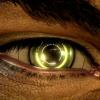I'm going to post a reply to this reply from Major Legend from the Fasoracetam thread in here, since I don't want to derail the other thread and it is about neurofeedback.
Nicely written as usual. Hardware cognitive enhancement is very interesting, however it remains to be applied in as wide scale as the vast amount of chemicals used in medicine so the evidence is limiting. I think they would probably coexist and support each other in the future. I don't think people are willing to give up "the chase" just yet, and :
1) neurofeedback is inaccesible for most compared to ordering chemicals,
2 ) it remains to be seen whether neurofeedback or brain stimulation works in a wider cohort. Stuff like this is worrisome ( I know you were talking about neurofeedback, but I think its a too early presumption in general that hardware is immune to side effects, especially we have zero long term studies vs chemicals):
Quote
I finally have the courage to share this. In January of 2013 I did a total of 3 anode on left DLPFC (fp1) attention montage sessions with an Activa Dose II with 3x3" armex electrodes in a saline solution with the cathode on the contralateral shoulder for 2ma x 20min each over 3 days (1 session at night each day). On the third day after doing a tdcs session I was drinking a few more cups of coffee than I normally do. I went to a coffee shop, the lights flickered, I thought that I was still seeing phosphenes and got anxiety. I decided to leave the coffee shop after about 35 mins. I went to a restaurant and there were too many appliances in the wall as well and the lights flickered. (I confirmed it from an individual who worked there that the lights were flickering.) I ended up going home with my togo order and ate it at home. Around 50 mins. from originally doing tdcs I was watching a documentary when my hands started to tingle for no reason. I looked down at my hands and then boom! Instant panic attack. I thought I was having a stroke and ran out of my apartment in the fight or flight fashion. I thought I was originally having a seizure or stroke or something. I felt like I was choking on air. I had experienced something that my coping mechanisms could not handle and my psyche would be damaged forever. I thought I was going to die for real. I ended up walking back home after searching my iphone on google my symptoms and realizing I had a full blown panic attack. For the next 3 days I didn't want to leave my covers, I had gastrointestinal stress through repeat toilet visits, I had crippling anxiety and depression. I stayed in my bed eating cheerios for a week, skipping class and friends. It didn't go away. I was diagnosed by a psychiatrist with panic disorder, GAD, and major depressive disorder. It's now been a year and a half since this happened. I have no panic attacks or constant anxiety, but I still have major depression. I did 35 sessions of CBT just to get over my traumatic event. I have to take 50mg Zoloft and 300mg Wellbutrin just to get by. My quality of life is almost ruined compared to how it was before. My brain is still young and plastic (22 years old) and I've had tremendous progress in going from not being able to leave my room and bed to going back to school, yes I dropped out of college with a medical emergency withdrawal from a psychologist written appeal. know I had genetic predispositions to anxiety and depression, but why was the tdcs and caffeine a trigger that unleashed this black dog. I always think about going back in time and never attempting tdcs. If anyone else had something like this, please chime in. Ask away... In my opinion, it is definitely invasive not noninvasive. /u/level6159 please join in as well with your panic attack experience. I still don't know what went wrong to this day. I had a theory of amygdala stimulation, but I've thrown that out based on the current path.
also: If any neurologists or tdcs specialists want to study me, contact me by sending me a pm. I'm in the Atlanta area near that Atlanta tdcs clinic.
edit1: I also have a friend who did the same montage over 60 times or so and had a panic attack and is now in the same situation. We don't know if we can attribute it to the tdcs, our genetics, our environment, or a combination of everything (the perfect storm of conditions).
edit 2: http://www.mrn.org/f...hole_Letter.pdf (1-in-500) adverse effects of a panic attack
edit 3: I forgot to mention, for the first 6 months after the panic attack I had the worst tension headaches and pressure behind my eyes.
edit 4: new speculation by talking with private individuals has come up with the possibility of stimulating my cns because of the contralateral cathode placement causing the hand tingling, also the possibilty of vagus nerve stimulation causing the gastrointestinal distress, and lastly and most important speculation of the panic attack and following anxiety through potential stimulation of the ventromedial prefrontal cortex which is known to operate in this realm. The only strange thing so far is the prolonged potentiated anxiety and anxiety-reaction of depression due to there being not much long-term potentiation (only 3 sessions over 3 days, yet the adverse effects remained.) With the contralateral shoulder cathode montage, it should be noted that we now know the current is gratest in the middle, which again reinforces the ventromedial prefrontal cortex stimulation hypothesis.
edit 5: I think another topic of discussion here would be: what are the consequences if something emotionally traumatic happens to you (such as a panic attack) within the first hour post tdcs session. Will the longterm potentiation have a greater long term effect since emotional events such as panic attacks cause a release of many different neurotransmitters such as norepinephrine, etc. If there is emotional trauma during this period of plasticity, is the plasticity a potential negative factor if the experience is a bad one?
3 ) Tolerance/homeostasis is a huge issue with chemicals, but if neurofeedback is similar to how I imagine it is, then there are probably limitations to how much it can shift the brain. I think of the comparison of exercise vs supplements/steroids.
4) Piracetam, caffeine, etc is instaneous. Neurofeedback, epigenetics and so on isn't. The feedback from chemical is generally very direct, if it doesn't work then ditch it and swap for something else.
Again as usual I just like to throw in the other side of the coin for discussion. I am VERY interested in neurofeedback, TDCS and light stimulation, but I think its too early to rule out pharms just yet.
First off, thanks for the thoughts man, I appreciate you playing devil's advocate, it is how we move things forward. I'm going to reply on a point by point basis.
1) It is true that the setup and cost of neurofeedback are greater than your average investment into nootropics, at least in any single case. But the amount of time spent researching noots and searching for the best deal, and the amount of money most people spend in doing so (I know I've easily spent £5,000+ on this stuff in the last few years) will for most people outstrip the initial investment of time and money in NFB, if not now, then at some point along this never-ending wild goose chase. One of the benefits of NFB equipment is that once you've got it and learned how to use it, you have essentially unlimited usage of it without any further investment required.
2) I get the sense that more traditional approaches to NFB have mostly been limited to those with brain dysfunction, having limited applicability to healthy individuals. Yet brain dysfunction is more prevalent than is generally realised. Environmental toxins, exposure to drugs, trauma (which we all have experienced, to a degree), knocks to the head, significant stress/depression etc often result in the disorganisation or disrupted maturation of the cortical timing relationships which underlie effective information processing and healthy mental/emotional states. The vast majority of people have dysfunctions they're not even aware of, which possibly explains the efficacy of treatments like SMR neurofeedback in many subjects, which supposedly correct (and possibly enhance) thalamo-cortical feedback loops.
NFB has been around a long time, and there are many studies on its positive efficacy in a wide range of people (check out this comprehensive bibliography if you're interested), and if done correctly the incidence of side effects is practically non-existent. Before the advent of universally applicable protocols such as Infra-low frequency training or Alpha-Theta synchrony training I gather NFB was quite difficult to operate, the setup was more complicated and it was therefore easier to mess up and cause problems. With these newer protocols, since they are universally applicable and the parameters controlled by the programs themselves without requiring adjustment of which frequencies you're training, they are harder to mess up with. NFB isn't really comparable to tDCS, since the latter introduces foreign elements into the system, while the former simply tightens the loop of self-regulation usually mediated by external behaviour to that of internal behaviour ie the development and enhancement of mind-brain control. Because all that is trained is the specifics of perception/action dynamics inherent within the system (I'm talking on a micro-scale here), the chances for problems, when done right, are practically non-existent. Certainly orders of magnitude less than the risks involved with ingesting foreign agents (by which I don't mean cannibalizing Russian spies haha).
3) The limits were more in place before the advent of TAGsync. I cannot understate the revolutionary nature of this approach; previous NFB techniques were based on normalizing some aspect of cortical function to within some optimal range. They were a kind of negative feedback loop of 'tightening up the brain game', and this approach reaches limits quickly ie when those frequencies/systems are tuned optimally. TAGsync, as I interpret it, is a whole other beast, because here we're talking positive feedback loops, which is to say, of evolution rather than stabilisation. This is because we're literally strengthening important neural systems within the brain, while at the same time strengthening the brains ability to optimally communicate with itself via the neural dance of synchronisation/desynchronisation, as opposed to the training single areas and frequencies to optimal ratios. By training the interconnectivity between regions and working at a systems level, the possibilities are hugely amplified. Optimal developmental dynamics tend towards greater synchrony across wide frequency ranges and within certain specific brains systems (such as the default mode network/task positive network), and this dynamical pattern is the natural tendency of the brain when given space to evolve in an optimal biopsychosocial environment. That these patterns emerge in both highly intelligent individuals as well as meditators who simply learn to rest their minds deeply shows that this is the natural trajectory of the mind once disruptions are removed and a richness of experience is provided. But unfortunately many of us never make it that far, or even close to it, due to a large variety of biopsychosocial stressors we have encountered throughout our lifetime.
Since the general goal of neurofeedback is to learn to fully enter the trained states at will, I think the ceiling of TAGsync training is a looong way off. I've been doing it a fair while, and I still have difficulty entering the state and cannot by far enter it consistently, yet I notice significant gains even between sessions. It is fair to assume that the ceiling of effect will be reached once I can hold synchrony perfectly, either across my entire brain or across the relevant systems (I'm not sure what the limits are). At this point, I assume I will have reached, or come close to, what the mystics call enlightenment, since TAGsync was designed as a kind of reverse-engineering of people who hold those states. The analogy of neural with muscular development is I think a bit misleading, because the brain kind of repeatedly resets its foundation so that new baselines are established, with no feasible ceiling,by which I mean, there is never a point at which you stop learning, stop developing mentally (unless you've gone insane or stare at walls all day), whereas there is a definite physical ceiling. There doesn't seem to be any point at which your brain gets 'full', is what I'm getting at, the potential for growth is never exhausted. On the other hand there is a definite limit to the size of your musculature and strength. Even then though you get people like Ross Enamait, who is really small (in comparison to for example bodybuilders) but is insanely strong and has been progressively building his strength for years. What he can do blows my mind. Anyway, I'm not saying there are certainly no limitations to being human, I'm just pointing out that where those limitations lie is a very blurry line, and we are still charting that territory, constantly pushing that edge. I have a feeling that TAGsync can take us a significant amount of the way there. One way in which it seems to be able to do this is by greatly increasing the depth and ease of entering into the profound state of flow, in which neuroplasticity is boosted to a considerable degree and which is applicable to every area of life when learned deeply. Not that I've reached it yet, but I'm getting a better feel for it daily.
4) The feedback from NFB is also very direct. With protocols like ILF and TAGsync (and especially the latter) you notice an immediate and deep shift in mental state when hitting synchrony (and especially something called a phase reset) which can be relaibly expected to precipitate a shift in cognitive development. So, in the session itself you have direct feedback, then for the rest of the day you are enhanced (for instance, I feel pretty clear right now, even though I only had 6 hours sleep last night, mostly because I just did a TAGsync session, but also because my need for sleep has decreased since I've been using it), and then these changes get embedded, reinforced and unified over time. So you can tell immediately if it's working, and also get some immediate benefit. In fact I'd say it's far more immediately noticeable than any nootropic I've ever tried, and I've tried a few bucketloads.
Also, I should clarify, I'm not saying that pharms don't work some of the time for some people, as evidently they do. I just think they're a very blunt tool to sculpt a very delicate system, and I believe we're now coming into the age of their obsoletion, at least in terms of deep cognitive enhancement.
![]()





















































